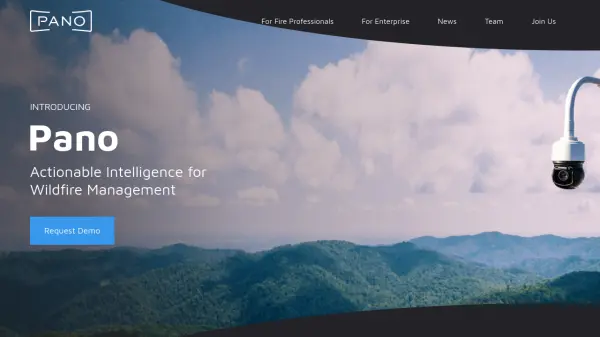What is Pano AI?
Upon detecting a threat from any source, the platform automatically alerts fire monitoring professionals, providing intelligent, auto-centered images with enhanced zoom capabilities for rapid confirmation and precise triangulation of the fire's location. Confirmed information, including up-to-date time-lapse imagery and details on fire movement, is quickly disseminated to extended teams and first responders via built-in alerts and mobile notifications. This comprehensive approach enhances situational awareness, improving the accuracy and control of wildfire response efforts to protect lives, property, and natural resources.
Features
- Pano Stations: Network of continuously scanning, 360-degree, ultra-high-definition cameras deployed on high vantage points.
- AI-Powered Detection: Uses deep learning and computer vision for automatic, real-time wildfire detection, verification, and classification.
- Rapid Confirmation Tools: Provides auto-centered images, enhanced zoom, and triangulation for quick fire validation and location pinpointing.
- Unified Data Integration: Combines camera feeds, satellite data, emergency alerts, and other sources into a single interface.
- Real-time Information Dissemination: Shares alerts, mobile notifications, time-lapse imagery, and key fire data with response teams.
Use Cases
- Detecting wildfires in their early stages across vast landscapes.
- Confirming the exact location and size of reported fires quickly.
- Providing real-time situational awareness to fire agencies and first responders.
- Monitoring high-risk areas for utilities, resorts, and private landowners.
- Improving wildfire response coordination and resource dispatch.
- Assisting insurance companies in assessing wildfire risk and impact.
Related Queries
Helpful for people in the following professions
Pano AI Uptime Monitor
Average Uptime
100%
Average Response Time
199.63 ms
Featured Tools
Join Our Newsletter
Stay updated with the latest AI tools, news, and offers by subscribing to our weekly newsletter.











